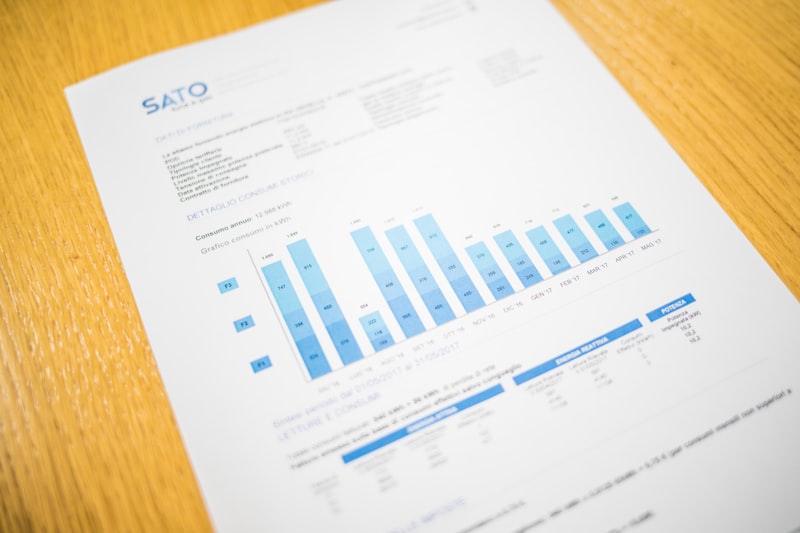Running a SaaS company is no easy task, and marketing can be expensive. Whether you're a bootstrapped startup or venture capitalists are pumping millions into your bank account, I'm sure there's some sort of marketing budget. But, the question is: Are you getting the most out of your budget? I will let you in on some of the top things that you should be doing to get a better ROI (Return On Investment) from your SaaS marketing budget.
Analyze your current spend and budget.
Why you need to track your current spend and budget:
In addition to being a great way to find out how you're doing, tracking your spend is also a great way of finding out how much you should be spending on each channel. It allows you to compare the performance of each channel with their costs and helps keep the marketing budget efficient.
How to analyze current spend and budget:
There are three main ways that can help you analyze current spend and budget.
The first is to do this manually by looking at your notes from acquisition campaigns or going through past invoices for these channels (which can be time-consuming).
The second is using an analytics tool, which will help you crunch numbers faster.
The third is using a spreadsheet. These will allow you to track all of your campaigns or all of your accounts to see which channels are performing well (and those that aren't) at any one point in time.

Create a SaaS marketing budget.
A SaaS marketing budget should combine actual dollars and percentage of revenue. For example, you might allocate your budget to the following things:
- 50 percent of your SaaS marketing budget to online webinars, blog content, videos, and other content assets
- 30 percent to field marketing activities (trade shows and events)
- 15 percent to online paid search (SEM) with five percent split between social media advertising, email ads, display ads, etc.
The last five percent of your SaaS marketing budget should go toward discovery efforts—what you need in order to experiment with new channels and tactics.
Set your goals and find out what they cost.
The first step to setting up a solid SaaS marketing budget is to define your goals. The type of objectives you have will drive a lot of your creative decisions, and will also dictate what marketing channels you use.
If you're looking for brand awareness, for example, then content marketing might be the answer because it offers an opportunity for consistent engagement with your audience. It's also extremely cost-effective if you outsource the production to a freelancer or agency. On the other hand, if lead generation is your objective, then PPC ads might be the better option as they can offer instant results (depending on what industry you're in).
It may also make sense to look at competitors in terms of how much they spend on their own marketing efforts. This may give you some idea of how much investment is necessary to make headway within your space.
Assess your company's strengths and weaknesses.
Before you begin putting together your SaaS marketing budget, take a step back and think about your company. What does it do well? What isn't working so smoothly yet?
Some examples of strengths may include:
- Your product has a unique feature that competitors don't offer.
- Your employees are highly skilled in SEO, PPC or other marketing channels.
- The business model is scalable and able to support the company's growth.
Examples of weaknesses could be:
- The product is less feature-rich than competitor offerings.
- Employees lack skills in marketing channels.
- The business model doesn't scale as quickly as it needs to support projected growth rates.
Get more data on customer-acquisition costs.
One of the most important things you can do when crafting a SaaS marketing budget is to get a handle on your costs. Effective cost management will help you better understand where your money is going and what it's buying you to make strategic decisions about how best to use it.
There are many different kinds of costs associated with marketing, and each one is valuable in its own way. Tracking costs is especially helpful when determining ROI. Knowing the value of each kind of cost will increase your company's bottom line because it will improve your ability to allocate funds where they're most effective. Here are some examples:
- Cost per customer: The total spent on acquiring new customers divided by the total number of new customers acquired.
- Cost per lead: The total spent on acquiring leads divided by the number of leads generated.
- Cost per acquisition: The total spent on acquiring new customers divided by the number of customers acquired.
Experiment with different channels.
If your budget is $1,000 per month, you might try allocating $300 to Facebook ads and the rest to Google Ads—or perhaps you'll put $800 in Facebook and use the rest for something else entirely. The key is to mix up what you're doing to see what works best.
It's also important that you consistently measure the results of each channel or campaign. Experimenting with different channels will help you find out which ones are most effective at bringing in leads and revenue (i.e., your bottom line).
Figure out customer lifetime value for key customer segments
If you have multiple customer segments with different CLVs, when you are tracking CLVs on a segment basis, make sure that each one gets a fair share of marketing attention. Since some customers will be more valuable than others (and some will be less valuable), you should use their CLVs as a guiding metric for how much time it'll take for each customer to reach his/her maximum potential.
Before you start spending, figure out what you want to accomplish and how much it will cost.
Before you start spending, figure out what you want to accomplish and how much it will cost.
Your marketing budget should be tailored to your specific needs. Don't waste time trying to find a one-size-fits-all strategy for your SaaS company—everyone's situation is different. Too many people set goals without any idea of what they're actually trying to accomplish.
Don't try to keep up with the Joneses—set ambitious but realistic goals that fit within your company's capabilities and financial framework. Your goal could be anything from expanding your pipeline by 10% or acquiring new users in a certain location or industry, but make sure it's something tangible and achievable within 3-6 months.







